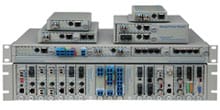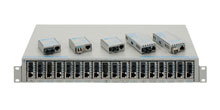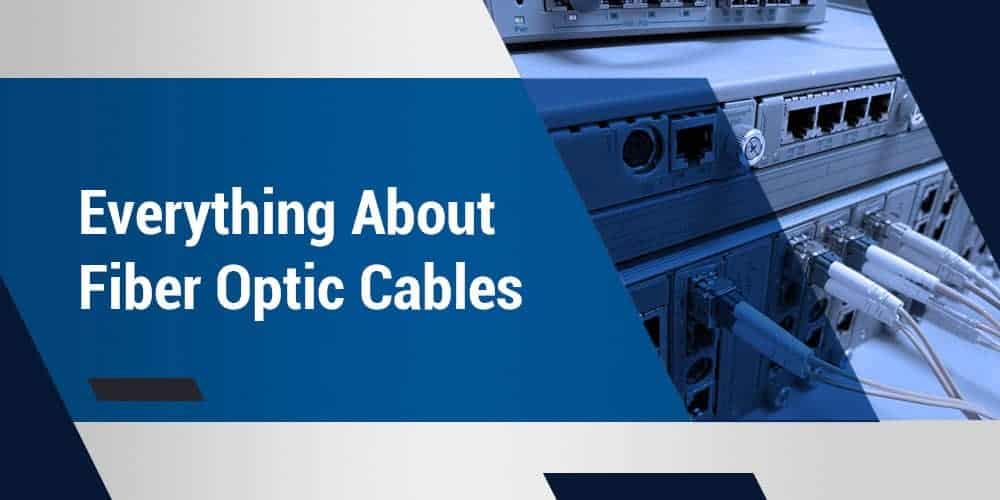- Products
- PoE Media Converters and Switches
- Ethernet & PoE Switches Product Selector
- Multi-Gigabit Ethernet and PoE Switches
- PoE PSE Commercial Switches
- PoE PSE Industrial Fiber Switches
- PoE Industrial Copper Extenders
- PoE Powered Media Converters
- PoE PSE Media Converters
- PoE Extenders & Injectors Product Selector
- Pluggable Transceivers Product Selector
- Single Pair PoE Products
- Product Lines

- iConverter Managed Multi-service Platform
- Copper to Fiber Media Converters
- Ethernet Media Converters
- 10 Gigabit Copper-to-Fiber
- 10/100/1000 Copper to 10 Gigabit Fiber
- 10/100/1000 Copper-to-Fiber with Integrated Management
- 10/100/1000 Industrial Copper-to-Fiber with Integrated Management
- 10/100/1000 Copper-to-Fiber with VLAN
- 10/100/1000 Dual Media Converter with VLAN
- Gigabit Copper-to-Fiber
- 10/100 Copper-to-Fiber with Integrated Management
- 10/100 Industrial Copper-to-Fiber with Integrated Management
- 10/100 Copper-to-Fiber with VLAN
- 10/100 Copper-to-Fiber
- Fast Ethernet Copper-to-Fiber
- Fast Ethernet Redundant Links
- 10Mbps Copper-to-Fiber
- 10Mbps Copper to Coax
- TDM Media Converters
- Serial Media Converters
- Ethernet Media Converters
- Fiber to Fiber Media Converters
- 10 Gigabit Fiber-to-Fiber Converter and Transponder
- 10 Gigabit Industrial Converter and Transponder
- SFP-to-SFP Fiber Converter and Transponder
- SFP-to-SFP Industrial Fiber Converter and Transponder
- Gigabit Fiber to-Fiber with 3 Rs
- 100/1000 Fiber-to-Fiber with 3 Rs
- Gigabit Fiber-to-Fiber
- Fast Ethernet Fiber-to-Fiber with 3 Rs
- Fast Ethernet Fiber-to-Fiber
- OC-3/STM-1 Fiber-to-Fiber
- OC-12/STM-4 Fiber-to-Fiber
- Carrier Ethernet Network Interface Devices
- CE 2.0 - 10G Demarcation NID
- CE 2.0 - 10/100/1000 Mult-port NID
- CE 2.0 - 10/100/1000 Mult-port NID with PoE
- CE 2.0 - 10/100/1000 8-Port NID
- CE 1.0 Service OAM - 10/100/1000 NID
- CE 1.0 Link OAM - 10/100/1000 Copper-to-Fiber NID
- CE 1.0 Link OAM - 10/100 Copper-to-Fiber NID
- CE 1.0 Link OAM - Gigabit Fiber-to-Fiber NID
- CE 1.0 Link OAM - Fast Ethernet Fiber-to-Fiber NID
- CWDM Multiplexers
- T1/E1 Multiplexers
- Ethernet Switch Modules
- Management System
- Chassis Options

- 1-Module Industrial Chassis

- RuggedNet Industrial Switches and Extenders
- Industrial PoE PSE Fiber Switches
- Multi-Gigabit Managed Industrial PoE+/BT Switches
- Multi-Gigabit Unmanaged Industrial PoE+/BT Switches
- 10G Managed 802.3bt PoE Switches
- 10G Unmanaged 802.3bt PoE Switches
- 10G Managed PoE+ Switches
- 10G Unmanaged PoE+ Switches
- 1G Managed PoE+ Switches
- 1G Unmanaged PoE+ Switches
- 1G Unmanaged 802.3bt PoE Switches
- 1G Managed 802.3bt PoE Switches
- Industrial SPE Switches
- Industrial Ethernet Switches
- Industrial PoE Copper Extenders
- Industrial Power Supplies

- OmniConverter Media Converter, Switches and Extenders
- PoE PSE Media Converters
- 10G Multi-Gigabit / Multi-Rate PoE Media Converter
- 10G Multi-Gigabit / Multi-Rate Media Converter
- 10/100 Multi-port PoE+ Media Converter
- 10/100 PoE+ Media Converter
- 10/100/1000 Multi-Port PoE+ Media Converter
- Industrial 10/100/1000 Multi-Port PoE+ Media Converter
- 10/100/1000 PoE+ Media Converter
- 10/100/1000 PoE++ 60W-100W Media Converter
- Industrial 10/100 Multi-port PoE+ Media Converter
- 1U Rack-Mount Shelf
- PoE PSE Compact Switches
- Multi-Gigabit Managed PoE+/BT Switches
- Multi-Gigabit Unmanaged PoE+/BT Switches
- 10G Managed 802.3bt PoE Switches
- 10G Unmanaged 802.3bt PoE Switches
- 10G Managed PoE+ Switches
- 10G Unmanaged PoE+ Switches
- 1G Managed PoE+ Switches
- 1G Unmanaged PoE+ Switches
- 1G Managed 802.3bt PoE Switches
- 1G Unmanaged 802.3bt PoE Switches
- Ethernet Switches
- Single Pair Ethernet (SPE)
- PoE Copper Extenders
- PoE Injectors

- miConverter Unmanaged Miniature Media Converters
- 10/100/1000 Copper-to-Fiber
- Industrial 10/100/1000 Copper-to-Fiber
- 10/100/1000 Ultra-Compact Copper-to-Fiber
- Gigabit Copper-to-Fiber
- 10/100/1000 Copper-to-Fiber PoE Powered
- 10/100 Copper-to-Fiber
- 10/100 Ultra-Compact Copper-to-Fiber
- 10/100 Copper-to-Fiber PoE Powered
- 18-Module Chassis
- Industrial 10/100 Copper-to-Fiber PoE Powered

- FlexSwitch Compact Switches
- Solutions
- Company
- Support
- How to Buy
Everything You Need to Know About Fiber Optic Cables

Fiber optic cables are made of a thin strand of glass or plastic and carry data signals in the form of light waves. This allows them to carry much higher bandwidth applications than conventional cables. Optical fiber cables can easily transfer data, audio, and other data because they have up to 100 Gbps bandwidth.
As fiber optic cables transmit data in the form of light, they transmit and carry much more data than copper cables, which transmit data in the form of electricity.
Light can travel in a fiber optic cable at approximately 214,000,000 meters per second. However, the speed of the data being carried by fiber optic cabling depends on the device, so when we say light, we don't mean as fast as light itself.
In 1966, scientists were trying to find a way to transmit information by light waves for the first time, Charles K. Kao and George A. Hockham proposed the use of glass as a medium for emitting light.
Following the introduction of the design in 1970, Corning Glass researchers, Robert Maurer, Donald Keck, and Peter Schultz, announced the construction of the first single-mode fiber optic cable. Since then, the world of communication has been changing because data has been transmitted in the form of optical pulses through fiber-optic technologies.
This guide discusses all parts of the fiber optic cables: the layers, connectors, adapters, and types. Stay with us to learn how to use these fiber optic cables in LAN and WAN applications.
What Is a Fiber Optic Cable?
Optical fiber cables consists of a glass core and plastic cladding and have the capability to carry thousands of voice calls. Fiber optic cables provide a capacity of 1Mpbs to 100Gbps.
Optical fiber is made of several layers. The core is the innermost layer that usually consists of a fully reflective filament of pure glass, but some cables are fully reflective plastic, which reduces manufacturing costs. However, a plastic core doesn't have same quality as glass and is mostly used to carry data over short distances. The cladding is made of glass or plastic, which is located around the core. The diameter of the core and the cladding together is about 125 microns, the size of human hair.
Depending on the manufacturer, the buffer layer is made of plastic, which wraps around the cladding. This layer holds the entire cable, which can hold hundreds of different optical fibers. For measurement, the cladding does not count. The decimal number 130/60 microns for fiber represents that the diameter of the core is 60 and the buffer is 130.
Types of Fiber Optic Cables
Optical fibers are divided into multi-mode and single-mode.
The primary and essential difference between multi-mode and single-mode is that multi-mode optical fibers has a larger core and will not carry data as far as single-mode fiber. The multi-mode optical fibers are used in internal networks where single-mode is used in outdoor applications
-
Single-Mode Fiber Optic Cable (SMF)
Single-mode fiber optic cables have a 9 micron core which allows data to be transmitted farther then multimode. Single-mode fiber can carry multiple wavelengths providing more devices to be connected to the same fiber optic cableing. They use laser transceivers , which is more expensive, but can transmit a longer distance (40 kilometers or more).
-
Multi-Mode Fiber Optic Cable (MMF)
Multi-mode fiber optic cables have a 50 or 62.5 micron core which restricts the distance of the data application. They use LED transceivers which are less expensive than laser optic but they limit the distance the data can travel. . Multi-mode fiber is used for short distances to connect devices in one building. The maximum distance for multi-mode fiber depends on the speed of the application (5km @ 100M, 500m @ 1G and 300m @ 10G).
| Fiber Optic Cable Types | Type | Core Size | 1Gb Distance | 10 Gb Distance | Wavelength |
|---|---|---|---|---|---|
| Multi-mode | OM1 | 62.5µm | 300m/1000 ft. | 36m/118 ft. | 850/1300 |
| Multi-mode | OM2 | 50µm | 550m/1800 ft. | 86m/282 ft. | 850/1300 |
| Multi-mode | OM3 | 50µm | 1000m/3280 ft. | 300m/1000 ft. | 850/1300 |
| Multi-mode | OM4 | 50µm | 1000m/3280 ft. | 550m/1800 ft. | 850/1300 |
| Single-mode | OS1/OS2 | 9µm | 2000m/6560 ft. | 2000m/6560 ft. | 1300/1550 |
| Single-mode | OS1/OS2 | 9µm | 10km/6.2 miles | 10km/6.2 miles | 1300/1550 |
Fiber Optic Cable Connectors
Fiber optic connectors are located at both ends of a fiber optic cable to connect to the network switches, telecommunications equipment, or even a light source. Companies have designed many types of connectors, but some of them have been more practical than others.
Adapters are usually placed inside the fiber optic patch panel and are selected based on the type of fiber and connectors used in the network.
SC Connector
SC fiber optic connectors are cheap, simple, and durable. They provide accurate alignment due to their ceramic ferrules.
-
-
SC Fiber Optic Adapters

-
The SC fiber optic adapter is made of metal and plastic with rectangular body covers. The SC fiber optic adapters are divided into simplex and duplex.
LC Connector
The LC fiber optic connectors are suitable for high-density environments and reduce the space required for the patch panel.
-
-
LC Fiber Optic Adapters
-

The LC fiber optic adapters have smaller pins and sheaths, which help increase the density and capacity of fiber optic connectors. The LC fiber optic adapter is divided into simplex, duplex, and quad.
FC Connector
The first optical fiber connector was the FC, and unlike the plastic-bodied SC and LC, it uses a ceramic ferrule.
-
-
FC Fiber Optic Adapter

-
FC fiber optic adapters have both single-mode and multi-mode versions, but they are mostly used in single-mode applications, high-speed fiber-optic telecommunication networks, and high vibration environments.
ST Connector
The ST connector is used in short-distance projects, such as corporate network environments and military, as well as industrial applications. ST connectors are still the most widely used in industrial networks and the construction of multi-mode fiber applications.
-
-
ST Fiber Optic Adapter
-

The ST fiber optic adapter has a metal and plastic body with a rectangular body cover. The ST fiber optic adapter is divided into simplex and duplex.
| Connectors type | Mating cycles | Ferrule size | Typical insertion loss | IEC specification |
|---|---|---|---|---|
|
SC |
1000 |
2.5mm ceramic |
0.25-0.5 |
61754-4 |
|
LC |
500 |
1.25mm ceramic |
0.25-0.5 |
61754-20 |
|
FC |
500 |
2.5mm ceramic |
0.25-0.5 |
61754-13 |
|
ST |
500 |
2.5mm ceramic |
0.25-0.5 |
61754-2 |
Optical fiber cables are made from a set of fibers with a thin glass or plastic strand to provide a speed of 1Mbps to 100 Gbps and carry plenty of data. When you use optical fiber cables in LAN for distance extension, multiple factors are at play. For example, which type of optical fiber cable connector is practical for your network device or which type of connector your devices support. If you would like more information, Omnitron Systems’ technicians are always available to help and answer your questions. Contact us today









